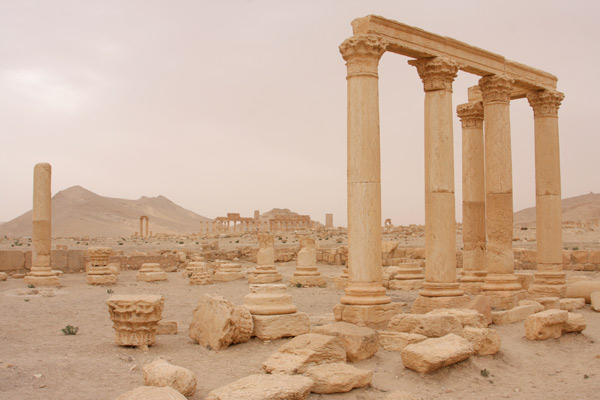Smithsonian Hosts “Cultural Heritage: Conflict and Reconciliation” Panel Discussions April 17 at Freer Gallery of Art
The Smithsonian and the University of Chicago’s Cultural Policy Center will host two panel discussions Friday, April 17, focusing on how cultural heritage has increasingly become part of global conflicts, as well as an aid to reconciliation and revitalization.
The panels will take place from 2 to 4 p.m. in Meyer Auditorium in the Smithsonian’s Freer Gallery of Art. The sessions are free and open to the public, but registration is required. The Freer Gallery of Art is located at 1050 Independence Ave. S.W. The panels also will be webcast.
Leadership Panel—2 to 3 p.m.
Betty Farrell, the executive director of the University of Chicago’s Cultural Policy Center, will introduce the panel. David Rubenstein, co-founder of The Carlyle Group, Smithsonian Regent and University of Chicago trustee, will interview the panelists:
- Irina Bokova, director-general, UNESCO
- Mounir Bouchenaki, director, Arab Regional Centre for World Heritage
- Richard Kurin, Under Secretary for History, Art, and Culture, Smithsonian
- Emily Rafferty, president, Metropolitan Museum of Art
Discussion Panel—3 to 4 p.m.
Farrell will introduce the panel. Rob Albro, associate research professor in the Center for Latin American and Latino Studies at American University, will moderate the panel discussion. Panelists are:
- Patty Gerstenblith, distinguished research professor of law and director of the Center for Art, Museum and Cultural Heritage Law, DePaul University
- Bill Ivey, China liaison, American Folklore Society
- Deborah Lehr, chairman, Capitol Archaeological Institute, George Washington University and senior fellow, Paulson Institute, University of Chicago
- Gil Stein, director, Oriental Institute and professor of Near Eastern archaeology, University of Chicago
About the Freer Gallery of Art
The Freer and Sackler galleries, the Smithsonian’s museums of Asian art, contain thousands of cultural treasures from places in current or historic conflict, including more than 2,000 works from Iran, Iraq, Syria and Afghanistan. These objects represent millennia of ancient and Islamic artistic accomplishment and range from Iron Age earthenware to intricate 18th-century calligraphy. Several of the finest examples are currently on view, including rare objects from Mosul, Iraq, and Rakka (Raqqa), Syria, two locations under immediate threat. For more information, visit www.asia.si.edu.
# # #
SI-169-2015

